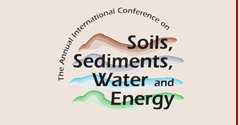Abstract
The sediments of the Lower Hackensack River provide a record of contamination from ongoing and historical processes in a highly urbanized watershed in northern New Jersey. This estuarine river runs through suburban and small cities in its northern, freshwater reaches; passing south through 8,500 acres of wetlands known as the Hackensack Meadowlands to its mouth at Newark Bay. The goal of this review is to depict the environmental quality of this ecosystem using data derived from sediments collected in 2003 during a Fishery Resource Inventory. This study replicated a similar inventory conducted in 1988, allowing for elucidation of spatial and fifteen-year trends. In the sediments, heavy metal concentrations, grain size distribution and carbon content were analyzed.
Based on sediment guidelines published by NOAA in 1995, the estuary is in “poor” ecological condition; the average concentration of one contaminant, mercury, exceeds the ERM (ERM is the median concentration of a contaminant observed to have adverse biological effects in the literature values examined). It is also apparent that enrichment of mercury and other metals occurs in the Hackensack River north of the mouth of Berry’s Creek, a major tributary known for its legacy of industrial contamination. In addition to this spatial trend, a good predictor of metal concentrations in the sediments appears to be the amount of organic matter present; preservation of organic matter in the river increases as tidal influence is diminished. The sulfate/sulfide cycle, driven by the reaction between seawater and the organic matter, appears to be the primary mechanism. Between 1988 and 2003, the average sediment concentrations were reduced significantly for cadmium (71%), chromium (63%), copper (73%) and lead (22%); zinc concentrations remained approximately the same (mercury was not analyzed in 1988). These results suggest a natural attenuation process at work, as burial preserves sulfide rich contaminated sediments.
Recommended Citation
Konsevick, Edward and Bragin, A. Brett
(2010)
"Chemical Characteristics of Sediment of the Lower Hackensack River, New Jersey,"
Proceedings of the Annual International Conference on Soils, Sediments, Water and Energy: Vol. 15, Article 25.
Available at:
https://scholarworks.umass.edu/soilsproceedings/vol15/iss1/25
